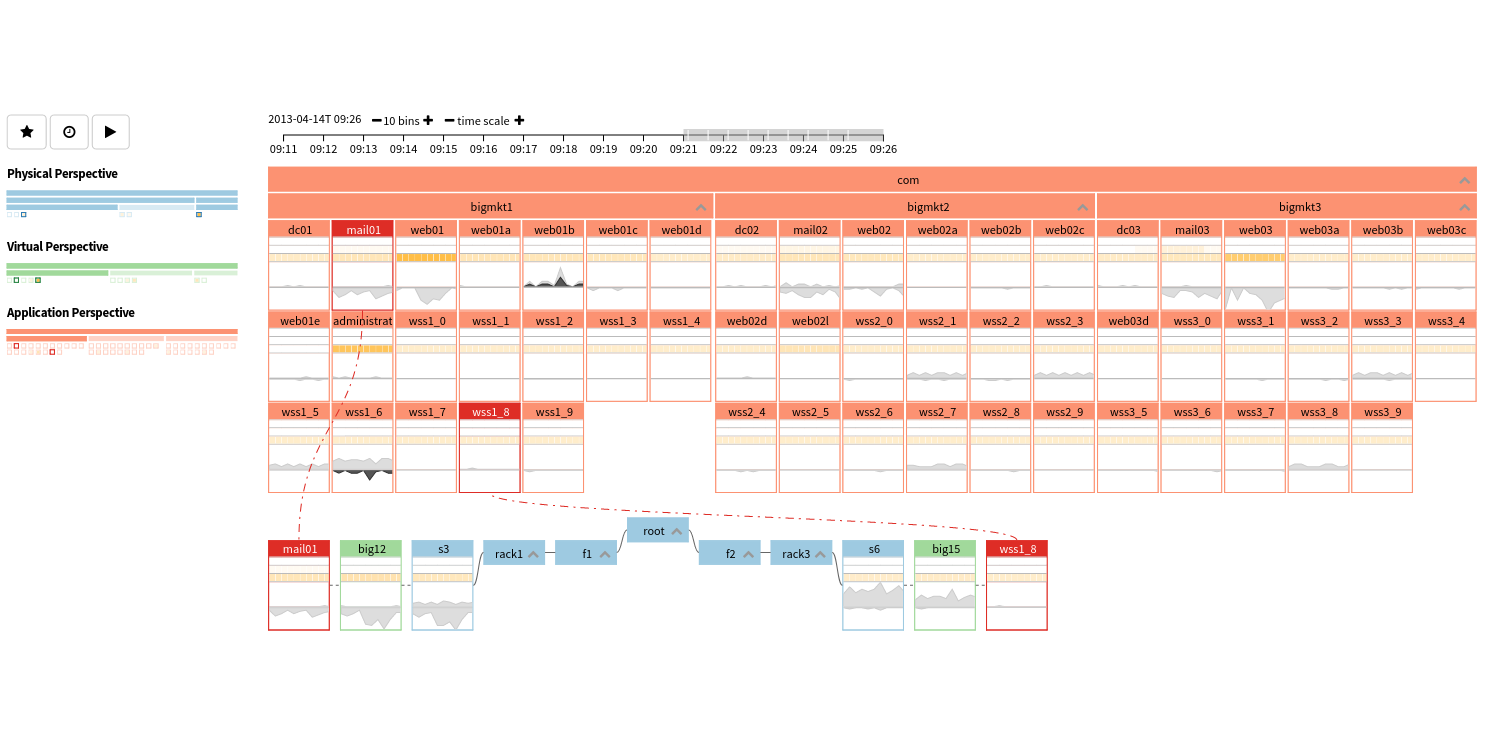
Abstract
With the rise of virtualization and cloud-based networks of vari- ous scales and degrees of complexity, new approaches to managing such infrastructures are required. In these networks, relationships among components can be of arbitrary cardinality (1:1, 1:n, n:m), making it challenging for administrators to investigate which com- ponents influence others. In this paper we present CloudGazer, a scalable visualization system that allows users to monitor and opti- mize cloud-based networks effectively to reduce energy consump- tion and to increase the quality of service. Instead of visualizing the overall network, we split the graph into semantic perspectives that provide a much simpler view of the network. CloudGazer is a multiple coordinated view system that visualizes either static or live status information about the components of a perspective while reintroducing lost inter-perspective relationships on demand using dynamically created inlays. We demonstrate the effectiveness of CloudGazer in two usage scenarios: The first is based on a real- world network of our domain partners where static performance parameters are used to find an optimal design. In the second sce- nario we use the VAST 2013 Challenge dataset to demonstrate how the system can be employed with live streaming data.
Citation
Holger
Stitz,
Samuel
Gratzl,
Michael Krieger,
Marc
Streit
CloudGazer: A Divide-and-Conquer Approach to Monitoring and Optimizing Cloud-Based Networks
Proceedings of IEEE Pacific Visualization Symposium (PacificVis '15),
175-182, doi:10.1109/PACIFICVIS.2015.7156375, 2015.
BibTeX
@article{2015_pacificvis_cloudgazer,
title = {CloudGazer: A Divide-and-Conquer Approach to Monitoring and Optimizing Cloud-Based Networks},
author = {Holger Stitz and Samuel Gratzl and Michael Krieger and Marc Streit},
journal = {Proceedings of IEEE Pacific Visualization Symposium (PacificVis '15)},
doi = {10.1109/PACIFICVIS.2015.7156375},
pages = {175-182},
year = {2015}
}
Acknowledgements
This work was funded by the Austrian Research Promotion Agency (840232).



